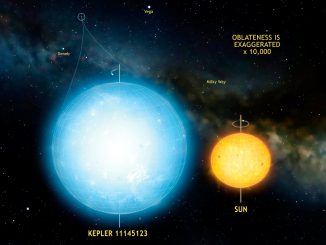
PLATO


Distant star Kepler 11145123 is roundest object ever observed in nature
A team of German researchers has succeeded in measuring the oblateness of a slowly rotating star with unprecedented precision using asteroseismology — the study of the oscillations of stars. The technique was applied to a hot and luminous star called Kepler 11145123 some 5,000 light-years away that is spherical to one part in 500,000.

Finding new worlds with a play of light and shadow
One method to discover planets beyond the solar system by far is transit photometry, which measures changes in a star’s brightness when a planet crosses in front of its star along our line of sight. NASA’s Kepler Space Telescope has used this technique to become the most successful planet-hunting spacecraft to date, with more than a thousand established discoveries. Satellites carrying improved technology for all-sky surveys are now planned, missions that will tell us a great deal about alien planetary systems similar to our own.

